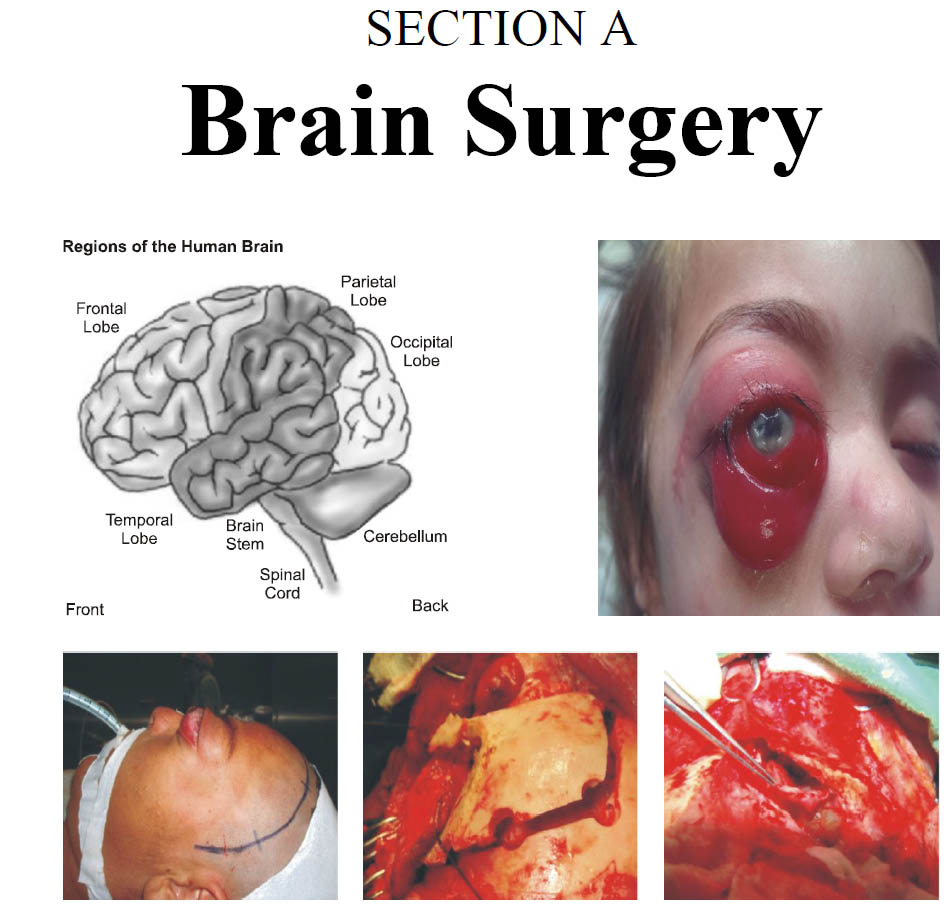Framed Stereotactic Brain Biopsy Outcome – Single Center Study
DOI:
https://doi.org/10.36552/pjns.v24i2.452Keywords:
Stereotactic surgery, framed basedAbstract
stereotactic biopsy. The study was conducted at the Neurospinal & Cancer Care Institute Karachi.
Material and Methods: After the approval from the ethical hospital committee, the study was conducted on 34 patients, in which 9 (26.4%) were females, and 25 (73.5%) were males. 34 consecutive patients with biopsy inclusion deep seated lesion, mid line pathology, eloquent area and operated surgery, previous radiation treatment were excluded, and after that, the biopsy report based surgery or radiotherapy treatment was decided.
Result: The biopsy underwent histopathological diagnosis proving Astrocytoma in 7 (20.5%) patients out of which four were in the Eloquent area, tuberculosis diagnosed in 5 (14.7%) patient, Oligodendroglioma diagnosed in 3 (8.8%) patients, metastasis in 5 (14.7%), Abscess in 4 (11.7%) patient which was aspirated to maximum and sent for culture, Malignant tumor (grade 3 & 4) 5 (14.7%), Lymphoma in 2 (5.8%) patient both were given radiation therapy Tumor necrosis 1 (2.9%) case, and No tissue obtained in 2 (5.8%) which was repeated later. No major complication or side effects were observed in the patient.
Conclusion: Stereotactic Framed biopsy is safe and accurate and can be used in deep seated lesions with high success rate, minimal complication and decrease surgical morbidity for patients, and it is comparable to updated methods.
References
2. Kitchen ND, Lemieux L, Thomas DG. Accuracy in frame-based and frameless stereotaxy. Stereotactic and Functional Neurosurgery, 1993; 61 (4): 195-206.
3. Palys V, Holloway KL. Frameless functional stereotactic approaches. In Current Concepts in Movement Disorder Management, 2018 Vol. 33: pp. 168-186. Karger Publishers.
4. Chen Y, Godage I, Su H, Song A, Yu H. Stereotactic Systems for MRI-Guided Neurosurgeries: A State-of-the-Art Review. Annals of Biomedical Engineering, 2019; 47 (2): 335-53.
5. Özek E, Seyithano?lu H, Kiti? S, Dündar TT, Tekin A, Hatibo?lu MA. Frameless Neuronavigation Assisted Brain Biopsy: Safety, Efficiency and Our Experience. Bezmialem Science, 2019; 7 (2): 145-50.
6. Verploegh IS, Volovici V, Haitsma IK, Schouten JW, Dirven CM, Kros JM, Dammers R. Contemporary frameless intracranial biopsy techniques: Might variation in safety and efficacy is expected? Acta Neurochirurgica, 2015; 157 (11): 2011-6.
7. Widmann G, Schullian P, Ortler M, Bale R. Frameless stereotactic targeting devices: technical features, targeting errors and clinical results. The International Journal of Medical Robotics and Computer Assisted Surgery, 2012; 8 (1): 1-6.
8. Edwards CA, Rusheen AE, Oh Y, Paek SB, Jacobs J, Lee KH, Dennis KD, Bennet KE, Kouzani AZ, Lee KH, Goerss SJ. A novel re-attachable stereotactic frame for MRI-guided neuronavigation and its validation in a large animal and human cadaver model. Journal of Neural Engineering, 2018; 15 (6): 066003.
9. Songul Meltem CA, Turkmenoglu ON, Tanik C, Uysal E, Ozoner B, Kaldirimoglu SA, Musluman AM, Yilmaz A, Cavusoglu H, Bayindir C, Aydin Y. Computerized tomography-guided stereotactic biopsy of intracranial lesions: report of 500 consecutive cases. Turk Neurosurg. 2017; 27 (3): 395-400.
10. Alptekin O, Gubler FS, Ackermans L, Kubben PL, Kuijf ML, Kocabicak E, Temel Y. Stereotactic accuracy and frame mounting: A phantom study. Surgical Neurology International, 2019: 10.
11. Bernstein M, Parrent AG. Complications of CT-guided stereotactic biopsy of intra-axial brain lesions. Journal of Neurosurgery, 1994; 81 (2): 165-8.
12. Hall WA. The safety and efficacy of stereotactic biopsy for intracranial lesions. Cancer: Interdisciplinary International Journal of the American Cancer Society, 1998; 82 (9): 1749-55.
13. Lu CY, Xu ZS, Ye X. Evaluation of intraoperative MRI-assisted stereotactic brain tissue biopsy: a single-center experience in China. Chinese Neurosurgical Journal, 2019; 5 (1): 4.
14. Cheng G, Yu X, Zhao H, Cao W, Li H, Li Q, Li Z, Yin F, Liu R, Zhang J. Complications of stereotactic biopsy of lesions in the sellar region, pineal gland, and brainstem: A retrospective, single-center study. Medicine, 2020; 99 (8): e18572.
15. Hamisch CA, Minartz J, Blau T, Hafkemeyer V, Rueß D, Hellerbach A, Grau SJ, Ruge MI. Frame-based stereotactic biopsy of deep-seated and midline structures in 511 procedures: feasibility, risk profile, and diagnostic yield. Acta Neurochirurgica, 2019; 161 (10): 2065-71.
16. Sciortino T, Fernandes B, Nibali MC, Gay LG, Rossi M, Lopci E, Colombo AE, Elefante MG, Pessina F, Bello L, Riva M. Frameless stereotactic biopsy for precision neurosurgery: diagnostic value, safety, and accuracy. Acta Neurochirurgica, 2019; 161 (5): 967-74.
17. Smith JS, Quiñones-Hinojosa A, Barbaro NM, McDermott MW. Frame-based stereotactic biopsy remains an important diagnostic tool with distinct advantages over frameless stereotactic biopsy. Journal of Neuro-Oncology, 2005; 73 (2): 173-9.
18. Neumann JO, Campos B, Younes B, Jakobs M, Jungk C, Beynon C, von Deimling A, Unterberg A, Kiening K. Frame-based stereotactic biopsies using an intraoperative MR-scanner are as safe and effective as conventional stereotactic procedures. PloS one, 2018; 13 (10).
19. Nishihara M, Sasayama T, Kudo H, Kohmura E. Morbidity of stereotactic biopsy for intracranial lesions. Kobe J Med Sci. 2011; 56 (4): E148-53.

Downloads
Published
Issue
Section
License
The work published by PJNS is licensed under a Creative Commons Attribution-NonCommercial 4.0 International (CC BY-NC 4.0). Copyrights on any open access article published by Pakistan Journal of Neurological Surgery are retained by the author(s).












